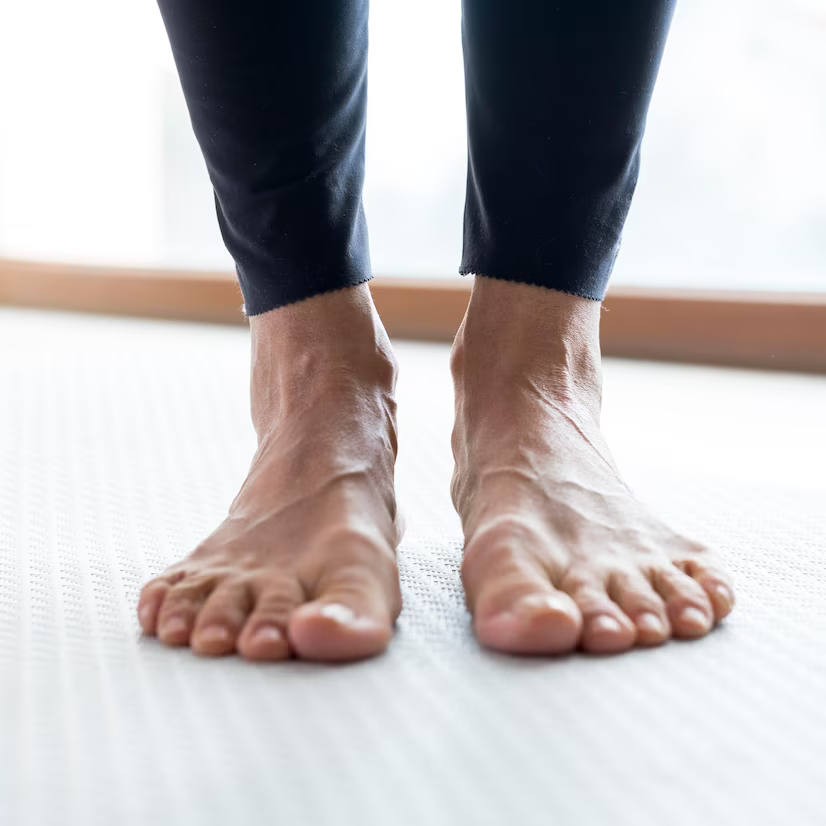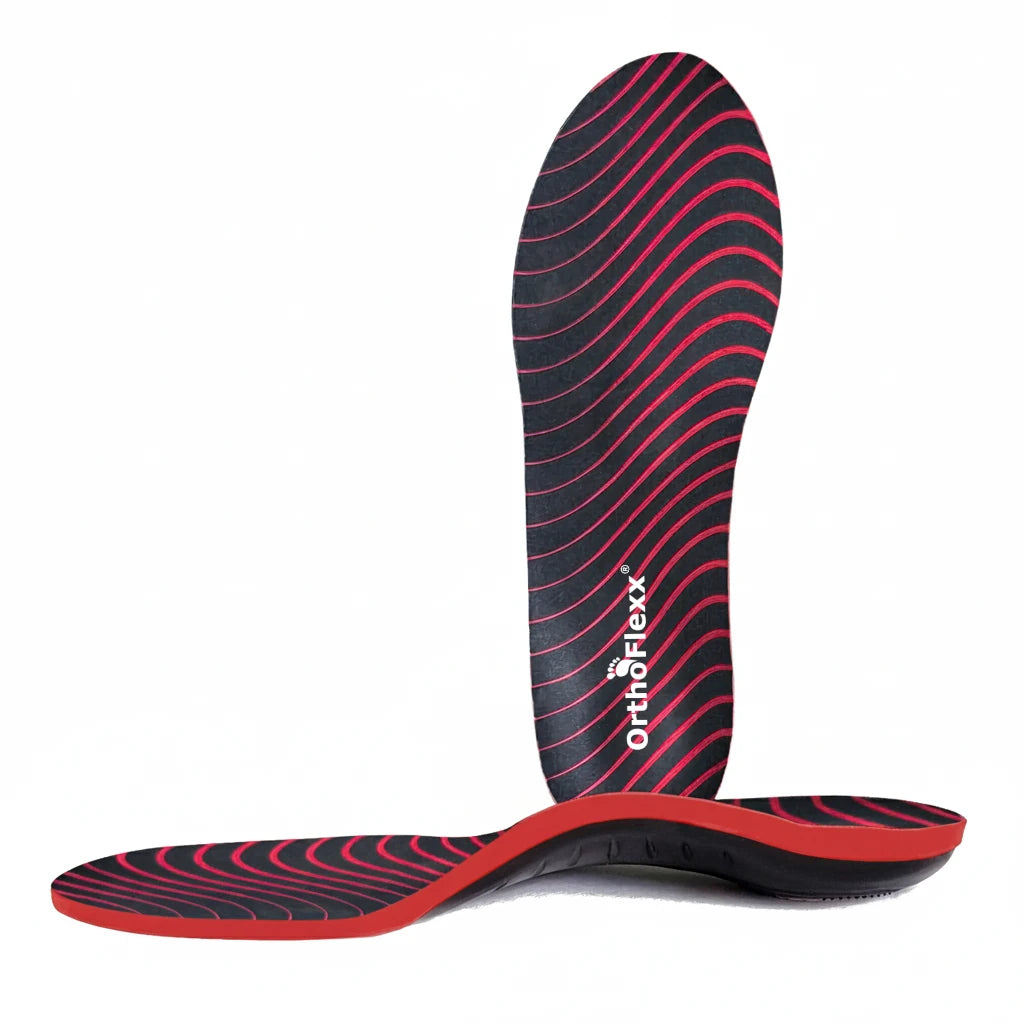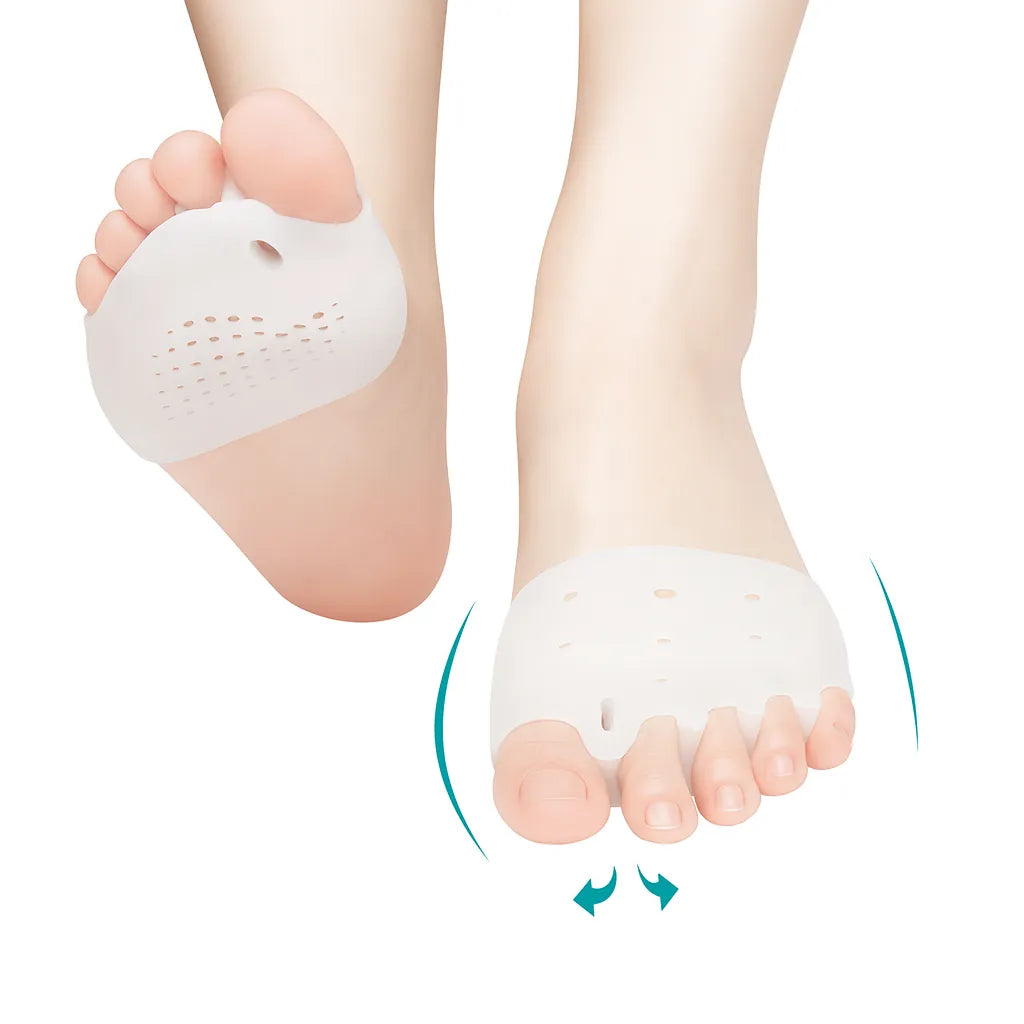
Correlating Foot Pain With Flat Feet Symptoms
Share
Flat feet, also known as fallen arches, is a common condition that affects millions of people worldwide. The implications of having flat feet extend beyond just aesthetics; they can often lead to foot pain and discomfort. In this comprehensive overview, we will explore the causes, symptoms, diagnosis, and treatment options for flat feet, as well as strategies for managing and preventing associated foot pain.
Understanding Flat Feet: A Comprehensive Overview
Flat feet, or pes planus, is a condition where the arches of the feet are absent or significantly flattened. Normally, the arches act as shock absorbers and distribute body weight evenly across the foot. However, in individuals with flat feet, the entire sole of the foot touches the ground when standing or walking.
Flat feet can develop for various reasons. Some individuals are born with flat feet, a condition known as congenital flat feet. This means that from birth, their arches do not fully develop, causing the feet to appear flat. Congenital flat feet can be hereditary, meaning it can be passed down from parents to their children.

Other causes of flat feet include weakened or stretched muscle, tendons, ligaments and plantar fascia. These structures are responsible for supporting the arches of the feet. When they become weakened or stretched, the arches can collapse, resulting in flat feet. This can occur due to repetitive stress on the feet, such as from activities like running or jumping, from wearing improper footwear that does not provide adequate support or as a consequence of other diseases such as diabetes and arthritis.
Foot and ankle injuries can also lead to flat feet. Trauma to the feet or ankles, such as fractures or sprains, can damage the structures that support the arches, causing them to flatten. In some cases, the arches may not fully recover even after the injury has healed.
Obesity is another risk factor for developing flat feet. Excess weight puts additional pressure on the feet, which can cause the arches to collapse over time. The more weight that is placed on the feet, the higher the likelihood of developing flat feet.
As we age, the ligaments and tendons in our bodies naturally become less flexible and lose their elasticity.
It is important to note that certain risk factors can increase the likelihood of developing flat feet. Being overweight or obese puts extra strain on the feet, making it more likely for the arches to collapse. Similarly, having a family history of flat feet can indicate a genetic predisposition to the condition.
The Connection Between Flat Feet and Foot Pain
Flat feet, also known as fallen arches, can disrupt the foot's natural biomechanics, leading to an altered gait and placing excessive stress on various parts of the foot. This abnormal force distribution can result in foot pain and discomfort. Over time, the structures within the foot, such as the tendons, ligaments, and muscles, may become strained and inflamed, contributing to ongoing pain.
Understanding the relationship between flat feet and foot pain is crucial for individuals who experience discomfort in their feet. By recognizing the symptoms and seeking appropriate treatment, individuals can find relief and improve their overall foot health.
How Flat Feet Can Lead to Foot Pain
When someone has flat feet, the arches that normally provide support to the foot's structure are either partially or completely collapsed. This lack of arch support can cause the foot to roll inward excessively, a condition known as overpronation. Overpronation alters the foot's natural alignment, leading to an abnormal gait pattern.
As the foot rolls inward, the weight distribution becomes uneven, placing excessive stress on certain areas of the foot. The arch, heel, and ankle are particularly vulnerable to this increased pressure. The lack of proper support and alignment can cause the tendons, ligaments, and muscles in the foot to become strained and inflamed, resulting in pain and discomfort.
In addition to the direct impact on the foot, flat feet can also affect the alignment of the lower limbs. The altered biomechanics can lead to issues such as knee pain, hip pain, and lower back pain.
Common Foot Pain Symptoms in Individuals with Flat Feet
Foot pain associated with flat feet can manifest in different ways. Some individuals may experience generalized foot pain, particularly in the arch, heel, or ankle area. This pain can range from mild discomfort to severe and debilitating.
Others may notice specific issues like plantar fasciitis, a condition characterized by inflammation of the plantar fascia, a thick band of tissue that runs along the bottom of the foot. This inflammation can cause sharp, stabbing pain in the heel or arch.
Achilles tendonitis is another common foot problem that can occur in individuals with flat feet. The Achilles tendon, which connects the calf muscles to the heel bone, can become inflamed and painful due to the increased stress placed on it as a result of overpronation. Stiffness and redness can also be present.
Additionally, people with flat feet may notice increased pain during activities that involve prolonged standing or walking. The lack of proper arch support and the altered biomechanics can make these activities particularly challenging and uncomfortable.
It is important for individuals with flat feet and foot pain to seek proper diagnosis and treatment. A healthcare professional, such as a podiatrist or a physical therapist, can evaluate the individual's foot structure, assess the severity of the condition, and recommend appropriate interventions.
Treatment options may include orthotic devices, such as arch supports or custom-made shoe inserts, to provide the necessary support and alignment. Physical therapy exercises can also help strengthen the muscles and improve foot function and arch. In some cases, surgical intervention may be necessary to correct severe structural abnormalities.
By addressing the underlying causes of foot pain associated with flat feet, individuals can find relief and improve their overall foot health. It is important to prioritize foot care and seek professional guidance to prevent further complications and maintain an active and pain-free lifestyle.
Diagnosing Flat Feet and Foot Pain
Clinical Examination for Flat Feet
A healthcare professional can diagnose flat feet through a physical examination. They will assess the structure of your feet, examine your gait, and evaluate any signs of discomfort or pain. Additionally, they may inquire about your medical history, family history, and any specific activities that exacerbate or alleviate your foot pain.
During the physical examination, the healthcare professional will carefully observe the arches of your feet. They will check for any visible flattening or collapse of the arches when you stand or walk. They may also use a device called a podoscope, which is a special mirror or glass plate that allows them to view the pressure distribution on the soles of your feet.

In addition to assessing the structure of your feet, the healthcare professional will evaluate your gait. They will observe how you walk and may ask you to walk on your toes or heels to assess the flexibility and strength of your foot muscles. They may also ask you to perform certain movements, such as standing on one leg or squatting, to further evaluate your foot function when balance is tested.
Furthermore, the healthcare professional will inquire about any discomfort or pain you may be experiencing. They will ask you to describe the location, intensity, and duration of the pain. They may also ask if the pain worsens with certain activities or if it improves with rest or specific interventions, such as wearing supportive shoes or using orthotic inserts.
Diagnostic Tests for Foot Pain
In some cases, healthcare professionals may recommend additional diagnostic tests to determine the cause and severity of foot pain. These tests may include X-rays, CT scans, or MRI scans. These imaging tests can reveal any structural abnormalities within the foot and help guide treatment decisions.
X-rays are commonly used to assess the bones and joints of the foot. They can provide detailed images of the bones, allowing the healthcare professional to identify any fractures, arthritis, or other abnormalities. CT scans, on the other hand, provide cross-sectional images of the foot, offering a more detailed view of the bones and soft tissues. MRI scans use magnetic fields and radio waves to produce detailed images of the foot's soft tissues, such as tendons, ligaments, and muscles. These scans are particularly useful in diagnosing conditions like tendonitis, ligament tears, or nerve impingements.
In addition to imaging tests, healthcare professionals may also perform other diagnostic procedures, such as blood tests. Blood tests can help identify certain systemic conditions that may be contributing to foot pain, such as rheumatoid arthritis, diabetes or gout.
By utilizing these diagnostic tests, healthcare professionals can gain a comprehensive understanding of the underlying causes of foot pain. This information is crucial in developing an appropriate treatment plan tailored to the individual needs of each patient.
Treatment Options for Flat Feet and Associated Foot Pain
Non-Surgical Treatments for Flat Feet
Fortunately, many individuals with flat feet and associated foot pain can find relief through non-surgical treatments. These may include wearing orthotic shoe inserts or arch supports to provide additional support and alleviate pressure on the feet. Physical therapy exercises can also help strengthen the muscles and improve foot function. In some cases, medications such as nonsteroidal anti-inflammatory drugs (NSAIDs) may be prescribed to manage pain and inflammation.
Surgical Interventions for Severe Cases
If conservative measures fail to relieve foot pain and improve mobility, surgical intervention may be considered. Surgical procedures for flat feet aim to reconstruct the arch, correct other structural abnormalities, and restore proper foot mechanics. These procedures are typically reserved for individuals with severe pain, functional limitations, or significant deformities.
Prevention and Management of Flat Feet
Lifestyle Modifications for Flat Feet Management
While flat feet cannot be completely prevented, certain lifestyle modifications can help manage the symptoms and reduce the risk of complications. Maintaining a healthy weight can minimize the stress placed on the feet. Wearing supportive footwear that provides adequate arch support and cushioning is also crucial. Additionally, avoiding or reducing high-impact activities and incorporating low-impact exercises can help protect the feet and mitigate discomfort.
Exercises to Alleviate Foot Pain from Flat Feet
Incorporating specific exercises into your routine can help strengthen the intrinsic muscles of the feet and improve arch support, providing more stability and shock absorption capacity. These exercises may include toe curls, calf raises, arch lifts, and ankle rotations. However, it is important to consult with a healthcare professional or physical therapist before starting any exercise program to ensure it is appropriate for your specific condition.
In conclusion, flat feet can be a source of foot pain and discomfort for many individuals. Understanding the causes, symptoms, diagnosis, and treatment options can empower individuals to seek appropriate care and find relief from their symptoms. By successfully managing flat feet, individuals can improve their overall foot health and enjoy an active and pain-free lifestyle.
Author Bio

Inês Pinheiro
Certified Physiotherapist for Shoulder and Knee Injuries
Inês is a skilled physical therapist with a special interest and extensive experience in working with athletes, specifically football players and also neurologic patients.













